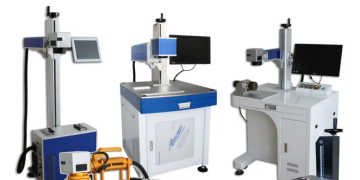If you’re a high-risk business, traditional banks might have turned you down when you tried to get a merchant account from them. Your business may have been labeled high-risk because it has a lot of fraud and chargebacks. It’s not enough for your business to stay afloat if you can’t accept credit and debit cards. It would be very beneficial to get a merchant account for high risk business.
What is a high-risk account?
A high-risk merchant account is an online payment account for businesses that are thought to be a risk to the banks. As high-risk enterprises are more likely to chargeback money, they have to pay more for merchant services. Start a setup procedure in less than 48 hours and cut down on chargebacks. Get the best prices for your business and how many people you have.
Because of the risk of chargebacks or the history of chargebacks and refunds, your bank may set aside money for your account every time you make a payment. In this case, the sum of money will cover the risk of chargebacks or fraud.
A high-risk merchant account is not the same as a regular account
It’s not a surprise that having a high-risk business puts merchant account providers at many risks. It’s standard for high-risk merchant accounts to charge much money for them. So, high-risk vendor accounts can look like they have many problems, but that’s not the case. The bottom line: Be ready to pay more.
- If you have a traditional, small business account, you may have to pay 0.3 percent on top of the interchange rate. However, if you have a high-risk merchant account, you may have to pay 1.5% on top of the exchange rate.
- The payment processor could use any number of ways to keep the business’s money as a “hedge.” For example, in the “Upfront Reserve” method, the merchant sends the process a certain amount that will be held in reserve. People sometimes have to wait for the payment processor to hold on to all completed transactions until the agreed-upon amount has been reached.
- A longer application process where a standard small business account can be approved in just a few minutes, a high-risk merchant account could take a few days to get the same thing.
- Even though high-risk businesses are more likely to be scammed, they also have to pay a chargeback fee anywhere from $20 to $100 each time they get a chargeback.
Choose a high-risk account because:
Forgery, reimbursement scams, and chargebacks are all signs that you’re running a high-risk business. Private security firms, gambling websites and forex exchanges, plane charters, record player contract creators, and automatic brokers are considered high-risk businesses. High-risk merchant accounts can provide these businesses with the following advantages:
With a high-risk merchant account, you’re shielding your business from chargebacks. There is an increased chance that you will maintain your merchant account. You will not have to close your account when you have a standard account, and it crosses the refunds threshold.
Credit Cards And Debit Cards Payment
One of the many reasons to open a high-risk merchant account is that they can accept credit and debit cards, which is one of them. Customers all over the world rely on cards to pay for things. Have these features, and your business will reach new heights.
New research says that people spend more money using credit cards and debit cards to pay instead of cash. So, if you open a merchant account, your business will make more money, so that is why.
Security
There are more and more financial scams and frauds in this day and age. Customers need to know that their information is secure with you. When you open a high-risk merchant account with trusted and reputable service providers, you can ensure that your customer’s information will be safe. High-risk merchant account providers use cutting-edge tools to prevent fraud and scams. This way, your customers’ credit and debit card information won’t be seen by anyone.
Customer Satisfaction
When your merchant account has better security, credit and debit card payments, and the ability to exchange local currencies, your customers will be happy with your services. Customers are also more likely to spread the word about your business when they don’t have to deal with complicated payments.

Who needs a high-risk account?
Travel is an example of a high-risk business because many things can make a trip awry. As a result, there are usually a lot of customers who get their money back and people who file chargebacks. There are also gambling, forex trading, and adult-themed websites, to name a few of the things people do.
Fees for a high-risk merchant account
High-risk merchant accounts cost more than those for businesses that aren’t very likely to get scammed. Much money will have to be paid in processing fees and account fees. There are some costs that you can’t avoid.
High fees for high-risk accounts were set as the norm many years ago, but now there are payment processors that tailor their rates to your business. Fifteen percent commission rate or even more fees are still the old way to do things. Don’t get stuck in long contracts that last three or five years. You don’t have to do this. Extra costs are the same.
Some high-risk payment providers may still charge you a setup fee, a monthly and annual fee, or even a PCI fee, so make sure you read the fine print. There may also be a fee if you want to shut it down before the date on the contract. It’s essential to read the agreement very carefully before you sign it. It should have information about the termination fee in it.
Conclusion
Look for high-risk payment processors that only charge you for transactions on your website or in your app. The industry is moving forward, so look for processors that only charge for transactions on your website or in your app.
They no longer have to be afraid that traditional banks will turn them away. Because high-risk industries are still on the rise, there is much room for new high-risk merchant account providers to help more businesses on their way.





















































